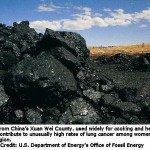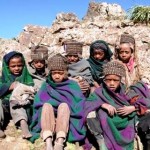
Nagoya – Mapping where a country’s carbon stocks overlap with areas that are rich in wildlife and important for local peoples’ livelihoods is underway in Asia, Africa and Latin America.
The aim is to support international efforts to conserve forests in order to combat climate change. But in a way that delivers other benefits including conservation of economically-important ecosystems linked with water, fertile soils and other crucial services.
Under the UN Framework Convention on Climate Change (UNFCCC), governments are negotiating a mechanism to provide payments for Reduced Emissions from Deforestation and forest Degradation plus additional forest “activities” (REDD+), with the aim of halving deforestation by 2020.
It is estimated that currently close to 18% of greenhouse gas emissions – equivalent to around six Gigatonnes (Gt) of C02 – are linked with land use change, mainly through forest loss. In 2004, this amounted to more greenhouse gas emissions than those of the transport sector.
The maps, being compiled by a partnership led by the UN Environment Programme’s World Conservation Monitoring Centre (UNEP-WCMC), are overlaying the carbon held in the vegetation and soils of a country’s terrestrial ecosystems with other key features. These include population densities; economic activities such as honey and gum production; the location of existing Protected Areas and biodiversity.
Achim Steiner, UN Under-Secretary General and UNEP Executive Director, said, “The aim is to assist governments in setting priorities for carbon investments. In Tanzania, for example, several carbon rich parts of the country are in areas where the ranges of almost 70% of the country’s mammal species overlap.”
“The mapping also reveals that almost a quarter of Tanzania’s total carbon stocks are in high carbon density areas that are not formally protected. This is the kind of science and analysis that governments from Ecuador to Cambodia are also now looking at to maximize the benefits of investments in REDD+ and accelerate a transition to a low carbon, resource efficient Green Economy,” he added.
UNEP-WCMC’s work is being supported through two streams of funding: the German Federal Ministry for the Environment, Nature Conservation and Nuclear Safety (BMU), and the UN-REDD Programme.
Maps have been developed for Cambodia; Jiangxi Province in China; Ecuador; Honduras; Nigeria and Tanzania. Under the UN-REDD Programme, UNEP-WCMC is expecting to do further work for the Democratic Republic of Congo and Indonesia.
The launch coincides with the Convention on Biological Diversity‘s 10th Conference of the Parties Meeting in Nagoya where progress on the 2010 Biodiversity Target committed to by the world’s governments will be reviewed, and other issues, including biodiversity and climate change, will be considered.
The launch of the reports comes in advance of the UNFCCC meeting in Cancun, Mexico this November, where moving forward on REDD+ will be high on the agenda.
Jon Hutton, Director of UNEP-WCMC, said, “Tropical forests host more than two thirds of the world’s terrestrial species, and provide vital ecosystem services that help to maintain people’s livelihoods. With global biodiversity under unprecedented threat, identifying areas that are high in both carbon and biodiversity offers an opportunity to direct scarce financial resources in ways that create win-win situations for climate change mitigation and biodiversity conservation.”
Country Highlights from the New Maps
Cambodia
Cambodia’s total land-based carbon stock is nearly 3 Gt. Approximately, one third of this is stored in the country’s evergreen forests, such as the biodiverse wet evergreen forests of the Cardamom Mountains rainforests in the Southwest of the country.
Nearly one third of Cambodia’s land-based carbon stock is stored in either Protected Areas (21%) or in Protection Forests (11%). The remaining carbon stocks fall under many different government-allocated land management categories, such as Forest Concessions, Community Fisheries Areas and Economic Land Concessions. These indicate the broad range of stakeholders that are likely to influence how forest carbon will be managed.
Jiangxi Province, China
Jiangxi Province, located in south-eastern China, holds nearly half a Gigatonne of land-based carbon stock. The majority of this carbon (71%) is stored in the Province’s needle-leaf and broadleaf forests. Almost half is stored in areas important for endemic and endangered species.
More than 45% of total provincial carbon stock lies in areas which are important for forest products. In Jiangxi Province, this includes products such as bamboo, seedlings, seeds, nuts, bamboo sprouts, and medicinal plants that are important sources of income for local people.
Securing forest carbon can also help to maintain the important contribution that forests make to conserving soil; in 78% of the Province, forest cover reduces erosion potential from “extremely severe” to “negligible”. This means that for vast areas of the province carbon management could provide co-benefits in the form of soil conservation and reduced sedimentation.













